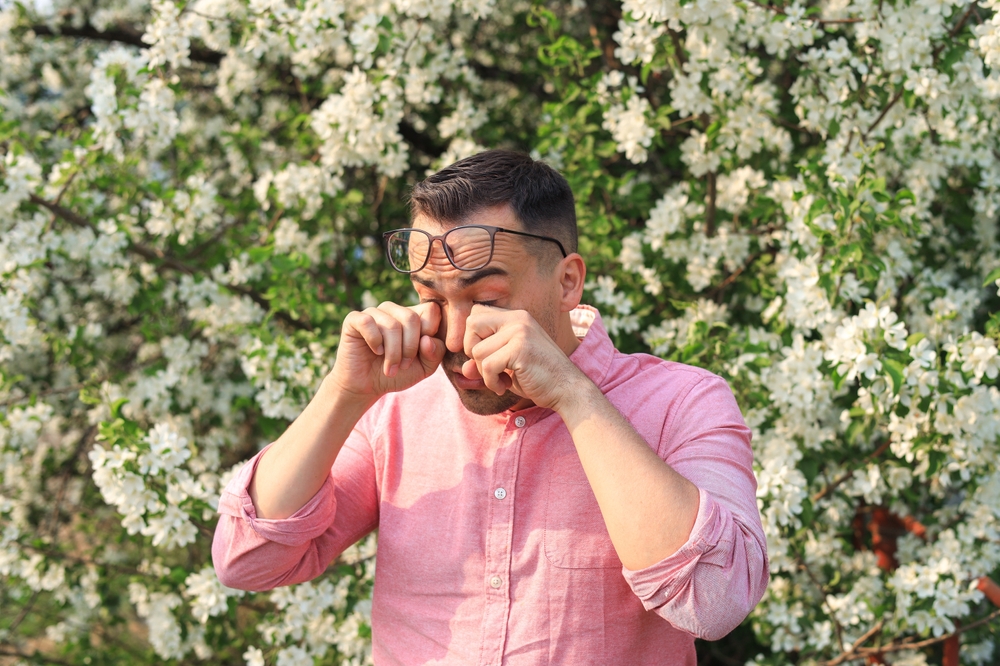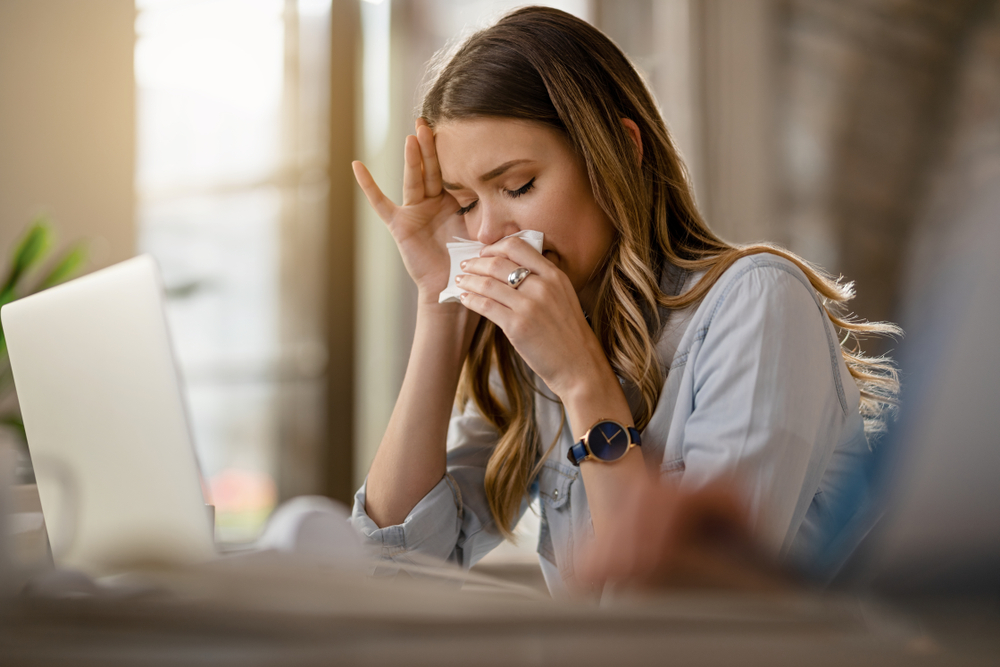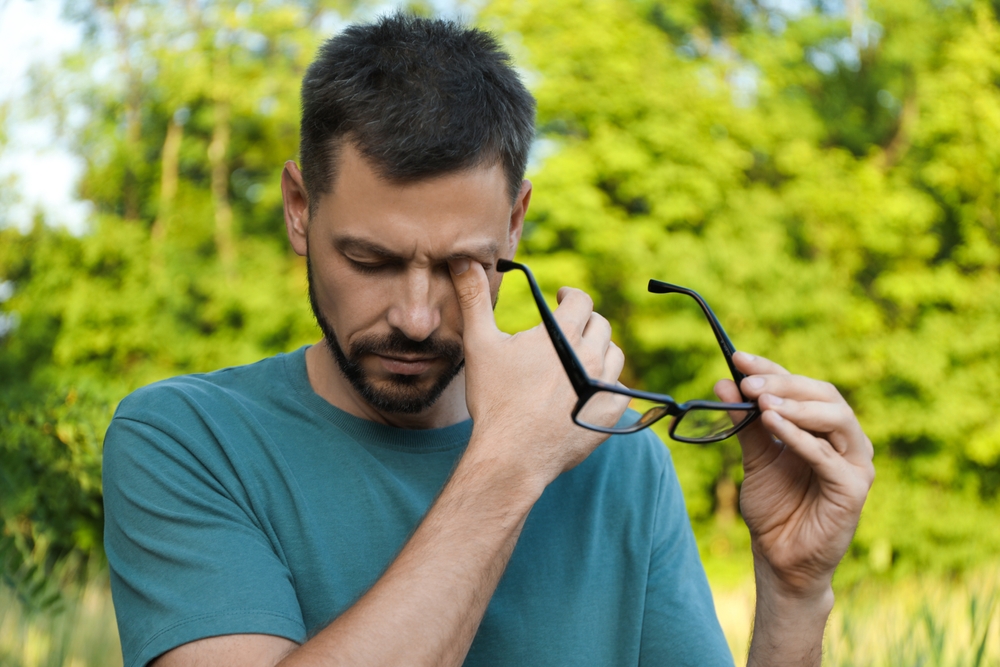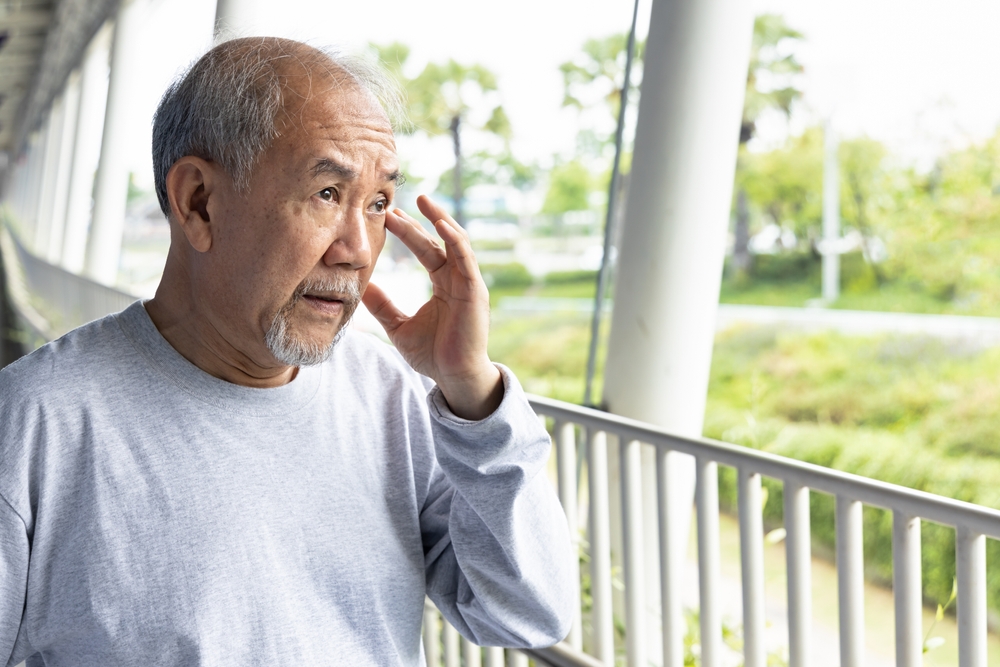
Unfortunately, it is possible to suffer from both Dry Eye and Allergies simultaneously. However, since the two health conditions share some of the most noticeable symptoms, it can be difficult to tell whether dry eyes, allergies, or a combination of the two is the source of your eye discomfort.
Knowing exactly what causes dry eye and allergies, how they differ, and how they can be most effectively treated can help determine the exact cause of your eye problems. Batra Vision Medical Group in San Leandro, CA, is here to help you understand your symptoms.
What Are Allergies?
Allergies, or more accurately, allergic reactions, are your body’s immune system’s response to exposure to an allergen. Some of the most common allergens include pollen, pet dander, dust mites, insect bites, and certain foods.
When you come into contact with an allergen, your immune system releases histamines, which tell the body to defend itself against the allergen. Histamines are what cause the symptoms of an allergic reaction.
What Are the Symptoms of an Allergic Reaction?

The most common symptoms of an allergic reaction include:
- Itchy, red eyes
- Excessively watery eyes
- A runny or stuffed-up nose
- Sneezing
- Rashes or hives
- Headaches and fatigue
What Can Trigger an Allergic Reaction?
While some people are born with specific allergies, others may experience an allergic reaction only when overexposed to an allergen. For instance, you may have an allergic reaction in the spring when trees release large amounts of pollen but not react to low levels of tree pollen present during the other seasons of the year.
While allergies can develop at any point in a person’s life, you are more likely to have allergies if you have a family history. While some allergies present at birth resolve independently, most allergies stay with a person for a lifetime.
How Are Allergies Treated?
Treatment for allergies depends on the severity of the allergic reaction. You likely have experienced minor success treating your mild or seasonal allergies with over-the-counter antihistamines, decongestants, or eye drops.
People who experience more severe reactions in response to exposure to an allergen might require more intensive care. For instance, people with a bee sting allergy might need to always carry a dose of a particular medication, like epinephrine, for immediate treatment if they are accidentally stung.
People whose allergies cause extreme restrictions on what they can eat or drink might undergo immunotherapy. During immunotherapy, a person is exposed to small amounts of an allergen over a long period to build up resistance.
What is Dry Eye?

There are two main types of dry eye. Environmental or lifestyle factors cause one type, and the other is dry eye syndrome, caused by physiological changes within the structures of the eye.
Environmental dry eye can be triggered by things like staring at a computer screen for too long or spending long periods in rooms with air conditioning or an electric heater. This type of dry eye is usually considered temporary and responds quickly to treatment.
Dry eye syndrome occurs when the eye stops producing enough high-quality tears to keep them adequately moist. This type of dry eye occurs most often in older adults and is usually a sign of aging.
What are the Symptoms of Dry Eye?
The most common symptoms of both dry eye and dry eye syndrome include:
- Eyes that sting, burn, or feel scratchy
- Pronounced eye redness
- Blurred, impaired, or fluctuating vision
- Eye fatigue when looking at a computer screen or reading text on a page
- A heightened sensitivity to environmental factors, like wind or smoke
- Headaches or migraines
A person who has dry eye syndrome might also experience these symptoms:
- Excessively watery eyes (caused by an over-production of poor-quality tears)
- Feeling like something is permanently stuck in your eye
- Eyes that feel sticky even after blinking
How is Dry Eye Treated?

Treatment for dry eye depends on the type of dry eye you are diagnosed with. For dry eyes caused by your environment or lifestyle, behavioral changes combined with over-the-counter eye drops can effectively alleviate symptoms.
If your dry eyes are caused by dry eye syndrome, your eye care provider may prescribe special eye drops or suggest a surgical procedure. These procedures include surgically closing the tear drainage canals within your eyes or inserting punctal plugs, tiny devices that reduce tear drainage.
At Batra Vision Medical Group in San Leandro, CA, we offer our dry eye syndrome patients LipiFlow treatments. A LipiFlow treatment eases dry eye syndrome symptoms by applying gentle heat and massage to unblock the meibomian glands, which produce the oils that are part of healthy tears.
Because some of the most noticeable symptoms are the same for both conditions, it can be difficult to tell whether you are suffering from dry eyes, allergies, or both! For the most effective treatment, getting an accurate diagnosis for each condition is essential.
The best way to determine whether dry eye is causing your eye problems is to schedule a comprehensive eye exam. An experienced eye care provider, like the team at Batra, can use precise tests to determine whether dry eye is the source of your eye discomfort or whether you may be suffering from both dry eye and allergies.
Don’t let dry eyes prevent you from seeing the world comfortably! Call Batra Vision Medical Group today to schedule a comprehensive eye exam!

 Follow Us!
Follow Us!